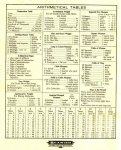For the most part, metric is much more tidy. Water freezes at 0; boils at 100; a mm is 1/1000th of a meter and a KM is 1000 of them; mass is a kg and force a newton, no one ever confuses the two. That sort of thing. People around the world are good with it, but here at home, not so much.
Americans have these things called feet, which are made up of 12 inches; gallons which are 4 quarts that happen to be 2 pints, and pints are pounds, but also 2 cups. And, speaking of pounds---we have pounds mass and pounds force, unless of course, you've heard of the slug. Which I bet very few people have, except, of course, when we are talking about slimy little creatures with no feet (not to be confused with the feet that consist of 12 inches).
Oh, and Fahrenheit: water freezes at 32 and boils at 212. Yeah, now it all that makes sense. We're nuts.
Anyway, there a few tricks for quickly converting various metric units to standard that I have picked up over the years. A few are simple, a few a little more convoluted.
Celsius to F: 0C is 32F and basically for every delta 10 C we get a change of 18 F. So, 10 C is 50 F, 20C is 68, 30C is 86... Going the other way, -10C is 14, -20 is -4--and, guess what? -40 is -40.

Distance is pretty easy to calculate at a glance too. 100 KM is 60 miles. 1 m is 40 inches. So, a meter and a yard are only 4 inches apart. Going small? No problem. A mm, at 40 thousandths of an inch, is really just a large 32nd. 10 mm is 3/8--or at least it's close enough for fast math in a pinch (it's actually closer to 13/32, but that gets a little too hard to work with, IMO).
Pounds are even better. Figure a kg is 2 pounds and you will always be in the ballpark.
Liquids are pretty much like yards and meters. If you think of quart as equal to a liter, you'll be in the ballpark every time.

